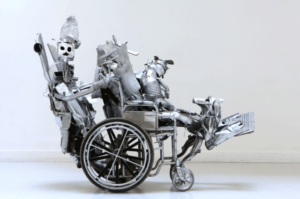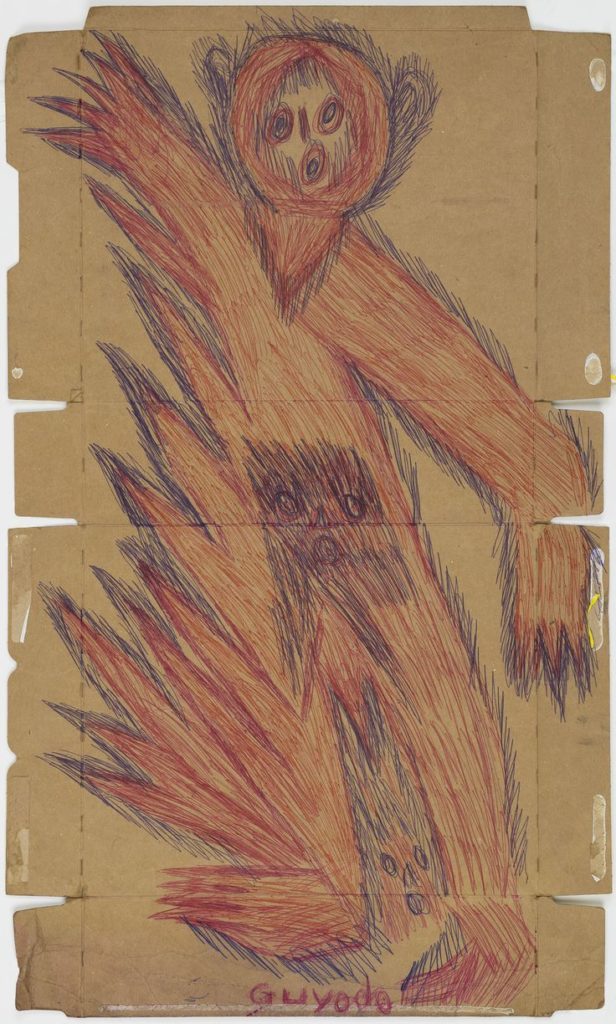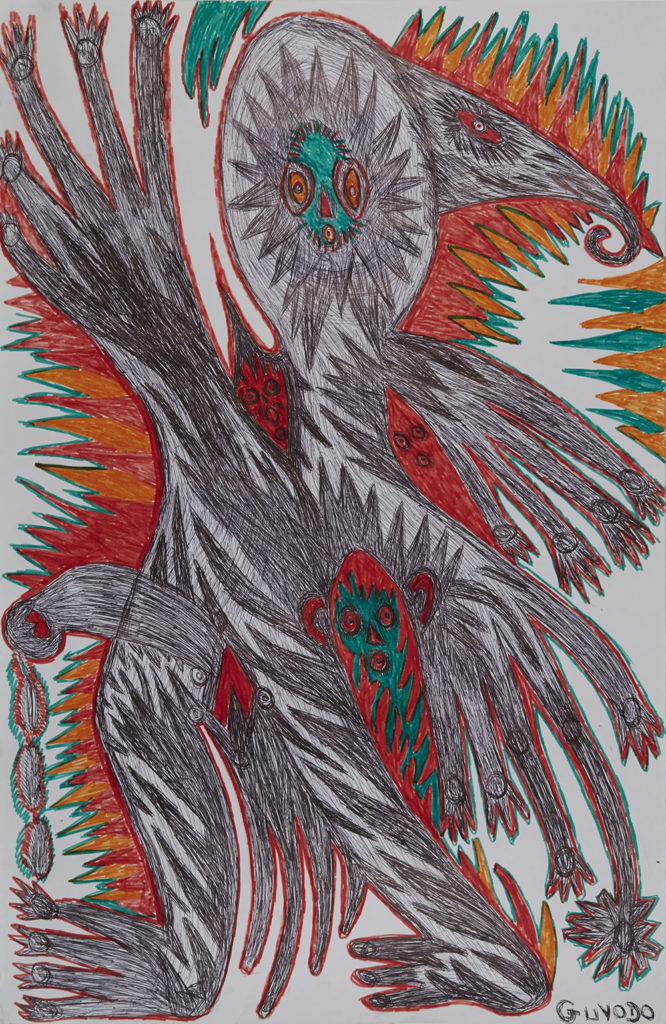
Frantz Jacques, Guyodo
About:
Those of us educated in the USA are told that a perfect democracy is “the balance of the three powers: the executive, the legislative, and the judicial”. The fourth power added to this equation, the press, often forgets that the arts have always been integral to a democracy, and there has always been an impetus felt by artists to participate in democracy through the arts, including the fine arts. Classical Athens is full of examples, where Pericles’s democracy came with a massive sculpture of Athena in the Parthenon.

With the fall of Jean Claude Duvalier on February 7, 1986, and the victory of the proletariat candidate Jean Bertrand Aristide, after a massacre at Ruelle Vaillant in 1987 of voters, in 1991, the Haitian proletariat exploded onto the political scene as agents of Haiti’s future.
Years later, Haitian democracy is imperfect but nonetheless a reality. New art, much more ‘horrific looking’ than usual, has also exploded into the scene. It replaced the naive and beaux arts that Haitians have been making before.

One of the great names of this post-1986 art explosion that democracy has brought about is Frantz Jacques Guyodo. He is both a sculptor and a painter, producing art outside of the westerner conception of ‘beauty’. He also does not explore ‘identity’ or ‘ethnicity’. Instead he chooses to represent Vodou spirits as they exist in the logic of Haitian democracy where the proletariat wants to participate in managing the nation.

According to his website: Guyodo was born Frantz Jacques on December 7, 1973 in a small house off the Gran Rue, the main commercial street of Port-au-Prince, Haiti. The rest of his family has moved but he still lives and works in the same rooms where he was born and raised with his grandmother, his parents, 6 sisters and 4 brothers. He attended Lecole Primaire, Secondaire and Troisieme and also worked after school sanding and staining wooden tourist items as did many of the kids in the neighborhood. He began playing soccer very young and became good enough to play professionally which he did until age 25 when he finally gave it up to please his mother, who had never approved of his soccer career; She wanted him to be a mechanic, which in fact he turned out to be, as it takes a high degree of manual dexterity and skill with hand tools to assemble the effigies that he imagines.

He was a founding member of Atis Rezistans, a group of artists, former woodworkers and carvers, who began to collect the junk that clutters their industrial neighborhood and incorporate it into works of art, some of them monumental, using car and truck frames, which make social and political statements and frequently pay homage to the Gods of Vodou. The sculptures are everywhere; groups of them line the narrow alleys and hang on the walls, spreading from the bulging ateliers of the artists to populate the block, a living museum in the ghetto, for people who do not normally frequent museums.
Guyodo’s art seeks a new a society, offering it direction through sculpture, as it’s the case for public sculpture in most societies. In his case, he does what the Haitian government does not do for its own people, willing to work diligently at the dream that one day Haiti will be for all.
Adolf Alzuphar
